Modern life is lit by screens. From smartphones and tablets to late-night TV and laptops, blue light exposure has become an unavoidable part of our routines—especially after sunset. While most people associate blue light with eye strain or sleep disruption, emerging research points to an unexpected consequence: its potential impact on melatonin production and, by extension, hair growth.
At ZMD Hair, we take a whole-body approach to hair health, considering not just what happens on your scalp—but what happens inside your body. In this blog, we’ll explore how blue light can disrupt melatonin levels and why that matters for the hair growth cycle.
What Is Blue Light?
Blue light is a high-energy, short-wavelength light naturally emitted by the sun. It helps regulate the body’s internal clock, or circadian rhythm, keeping us alert during the day. However, artificial sources like LED lights, phone screens, and computers emit similar blue wavelengths—and that’s where problems begin.
The body interprets blue light as a cue to stay awake. When we absorb it late into the evening, it suppresses melatonin production, disrupting the sleep-wake cycle. And as you’ll learn, melatonin plays more than just a role in sleep—it also has surprising effects on hair biology.
Understanding Melatonin’s Role in the Body
Melatonin is a hormone released by the pineal gland in response to darkness. It signals to the body that it’s time to rest, helping regulate everything from sleep patterns to immune function. But what many don’t realize is that melatonin also affects hair follicles.
Here’s how melatonin influences hair growth:
Regulation of the Hair Growth Cycle
Hair grows in cycles: anagen (growth), catagen (transition), and telogen (resting/shedding). Melatonin appears to extend the anagen phase, allowing follicles to produce hair for longer periods. Lower melatonin levels may shorten this growth phase, pushing hair prematurely into shedding.
Antioxidant Protection
Melatonin is a powerful antioxidant. It helps neutralize oxidative stress in skin and hair follicle tissues—stress that can otherwise lead to premature follicle aging or damage. This antioxidant effect may protect against thinning and brittleness.
Hormonal Balance
Melatonin interacts with other hormones that influence hair, including estrogen, cortisol, and thyroid hormones. When melatonin is out of sync, it can indirectly trigger hormonal imbalances that disrupt hair growth regulation.
How Blue Light Disrupts Melatonin—and Your Hair
The connection between blue light and hair loss isn’t direct—but it’s powerful. By disrupting melatonin, blue light sets off a chain reaction that can compromise the health of your follicles.
Suppression of Nighttime Melatonin
Research shows that even brief exposure to blue light in the evening can suppress melatonin release. This lowers its circulating levels in the bloodstream and reduces the amount available to reach the skin and scalp tissues where it performs antioxidant and regulatory functions.
Altered Circadian Rhythms
Our hair follicles operate on a circadian rhythm, just like other cells in the body. Disruption in this cycle—caused by lack of melatonin—can impair the natural signaling pathways that control when hair grows, rests, or sheds.
Poor Sleep Quality and Secondary Hair Loss
Reduced melatonin from blue light exposure leads to poor sleep quality, which in turn raises cortisol (the stress hormone). Elevated cortisol levels have been strongly linked to telogen effluvium, a form of stress-related hair shedding.
What Does the Science Say?
While still a growing field, multiple studies suggest a relationship between light exposure, melatonin, and hair health:
- A 2012 study published in Dermato-Endocrinology found that topical melatonin application helped reduce hair loss in patients with androgenetic alopecia. This suggests that melatonin plays a therapeutic role in follicle function.
- Animal studies have shown that manipulating circadian rhythms—such as exposing subjects to light at night—can impair hair regeneration, particularly by shortening the anagen phase.
- Additional studies link circadian rhythm disturbances (including jet lag and shift work) with increased oxidative stress and inflammatory responses, both of which negatively impact scalp and follicle environments.
Although more human research is needed, the evidence increasingly points to melatonin as a key regulator of healthy hair growth.
Are You at Risk?
You might be unknowingly sabotaging your hair growth by using digital devices late at night. Ask yourself:
- Do you scroll your phone before bed?
- Are you often exposed to bright lights in the evening?
- Do you fall asleep with the TV on?
- Do you struggle with sleep but haven’t changed your screen habits?
If you answered “yes” to any of these, your melatonin levels may be lower than optimal—impacting not just your rest, but potentially your hair’s ability to thrive.
How to Protect Melatonin and Support Hair Growth
Fortunately, there are practical steps you can take to reduce blue light exposure and support melatonin production—without giving up your modern lifestyle.
Use Blue Light Filters
Install blue light blocking apps on phones, tablets, and computers, or wear glasses with blue light lenses in the evening. These tools reduce melatonin suppression and protect your circadian rhythm.
Limit Screen Time Before Bed
Aim to power down all screens 1–2 hours before bedtime. Instead, wind down with low-light reading, journaling, or relaxation practices that don’t involve a backlit device.
Create a Sleep-Friendly Environment
Use dim, warm lighting in the evening to encourage melatonin production. Avoid overhead LED lighting and switch to amber-toned bulbs in the bedroom.
Consider Melatonin-Boosting Foods
Tart cherries, almonds, bananas, and oats contain natural compounds that support melatonin synthesis. A balanced diet rich in these can support your hair’s internal clock.
Optimize Hair Growth Holistically
At ZMD Hair, we address the full spectrum of hair health—going beyond the follicle to examine lifestyle, sleep hygiene, nutrition, and hormonal balance. When melatonin is supported as part of a comprehensive plan, we often see better outcomes in regrowth and retention.
Conclusion: Blue Light Isn’t Just a Sleep Problem—It’s a Hair Problem Too
We often hear about blue light as an eye or sleep concern, but its effects run deeper. By disrupting melatonin production, blue light can quietly interfere with your hair growth cycle—shortening the growth phase, increasing shedding, and accelerating follicular stress.
If you’re facing hair thinning and haven’t found a clear cause, it may be time to look at your screen time habits and sleep patterns. At ZMD Hair, we believe that restoring your hair means restoring balance in your body—from the inside out.
Don’t let late-night scrolling steal your sleep—or your strands.
📞 Call ZMD Hair today or visit zmdhair.com to schedule your consultation.
Let’s create a personalized hair restoration plan that considers your biology, your lifestyle, and your long-term goals.It’s not just about hair. It’s about health. And we’re here to help you restore both.




